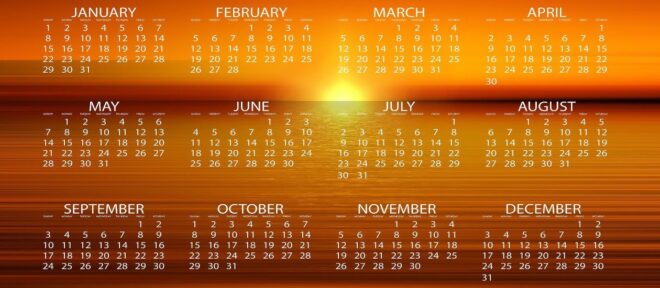
Note: Java Applets are obsolete, and the applet is no longer available
A while ago, Dr. Irv Bromberg mentioned to me, that my Zmanim API was in use in the Astronomical Clock Applet created by Ali Adams. The applet was a modification to Antony Pranata’s clock applet that displayed Islamic prayer times. Apparently the Zmanim API was so flexible that without any modification it was able to be used for generating “zmanim” well beyond anything I had envisioned. At Dr. Bromberg’s suggestion I modified the clock applet to display zmanim. Using the same Google Map API used in the Calendar Generator, I created the Zmanim Clock page (no longer available). The clock on the Clock page is very configurable, and allows selection of the location, zmanim etc. I contacted Antony Pranata, the original author of the clock who allowed my to release it under the GPL. An easy to use downloadable version will be made available in the near future. For those who think that the clock is upside down, there are more than enough configuration options to tweak the clock to your heart’s content.
Tag: Software Dev
Calculation of Zmanim VS Other Sites
 A user contacted me with the following note (some details removed).
A user contacted me with the following note (some details removed).
Could you please explain to me why there seems to be nearly a three-minute discrepancy between the zemanim for XXXXX, NJ at 20 meters (exact location) and those listed for 20 meters on the MyZmanim.com site. Your site calculates 4/20 at 6:08:20 and theirs has it at 6:11:25….
I really can’t comment on the MyZmanim.com site since their code is not open source and I do not know the exact algorithm they use. The Zmanim Project code used here has 2 different algorithms available for calculating zmanim, one using the algorithm published by the USNO (US Naval Observatory), and the other from the NOAA (National Oceanic and Atmospheric Administration). I have 2 different implementations of the USNO algorithm (one has since been removed as a duplicate), and both return the exact time to the millisecond, so I believe that the code is a correct implementation of the USNO algorithm. You can look through the code at my site and see if you find any issues. Having said that, I did a comparison between MyZmanim.com and my site using the USNO algorithm and both sites are within seconds (all calculations were for April 19 for XXXXX, NJ):
| Site | Algorithm | Elevation in Meters | Sunrise Time |
|---|---|---|---|
| MyZmanim | ? | 0 | 6:12:16 |
| MyZmanim | ? | 20 | 6:11:25 |
| KosherJava | USNO | 0 | 6:12:18 |
| KosherJava | USNO | 20 | 6:11:31 |
| KosherJava | NOAA | 0 | 6:10:11 |
| KosherJava | NOAA | 20 | 6:09:24 |
Based on this chart, the sunrise difference between KosherJava.com using USNO and MyZmanim.com who are probably also using the USNO algorithm is 3 seconds for sea level and 6 seconds at 20-meter elevation (see below for why the elevation calculation has this additional 3-second discrepancy). Keep in mind that while I was able to zoom in to the user’s exact location using the Google Map interface, myZmanim.com is using a zip code level calculation, and they might be calculating using a slightly different location.
I believe that the times the user was referring to in his note were generated using the NOAA algorithm implementation. As mentioned above, at this point I have no information to indicate what algorithm is more accurate, and I will hopefully one day post more information on the accuracy of these algorithms.
As far as the elevation calculation, I use the formula
zenith = zenith + Math.toDegrees(Math.acos(earthRadiusInMeters / (earthRadiusInMeters + elevationMeters)));
found in Calendrical Calcuations, as mentioned on the Zmanim Calendar Generator page. For this time of year and the XXXXX location and a 20 meter elevation returns a time 47 seconds earlier than sea level using my calculation, and 51 seconds earlier using myZmanim.com. I reran the calculation using the more commonly used but less accurate formula of
adding 0.0347 * squareRoot(elevationMeters) to the zenith
that is mentioned in the Maaglay Tzedek written by Rabbi Moshe Kosower (as mentioned in the JavaDocs and Calendar Generator page) and the difference between the 0 and 20 meter elevation was the same 51 seconds that appeared in MyZmanim.com. Besides relying on the more accurate calculation mentioned in Calendrical Calculations (considered the most authoritative book on calendars and astronomical time calculations), I spoke to Professor Moshe Koppel a few years ago about the subject and he validated the Calendrical Calculations algorithm (a seemingly common mathematical calculation). Looking back at the Maaglay Tzedek, it seems that this calculation includes changes to the refraction caused by the elevation, and I will have to research the subject some more. All this elevation difference boils down to an insignificant 3 second difference. Keep in mind that atmospheric refraction will have a much greater impact than this. Even if one were to know the exact atmospheric pressure, temperature and humidity, this varies in different parts of the atmosphere and would be extremely hard to calculate without measuring it at all elevations of the atmosphere. Please make sure to speak to a posek before using the time with elevation.
Zmanim Calendar Generator Does Not Yet Support 2007 DST Changes
 As you may know, the U.S. is changing the Daylight Saving Time rules this year due to the Energy Policy Act of 2005. The server currently hosting this site does not yet have the Java patch for this. This means that from the second Sunday in March (the 11th) until the last Sunday in March (the 25th), calendars generated from the Zmanim Calendar Generator will show the zmanim in standard time and not daylight savings time (DST). The same issue will happen in the fall from the last Sunday in October (the 28th) till the first Sunday in November (the 4th). The Java version used by the server should be patched within the next week or 2 to the latest Java 5 (JDK 1.5) version to solve this problem.
As you may know, the U.S. is changing the Daylight Saving Time rules this year due to the Energy Policy Act of 2005. The server currently hosting this site does not yet have the Java patch for this. This means that from the second Sunday in March (the 11th) until the last Sunday in March (the 25th), calendars generated from the Zmanim Calendar Generator will show the zmanim in standard time and not daylight savings time (DST). The same issue will happen in the fall from the last Sunday in October (the 28th) till the first Sunday in November (the 4th). The Java version used by the server should be patched within the next week or 2 to the latest Java 5 (JDK 1.5) version to solve this problem.
WordPress Hebrew Date Plugin Has a New Home
 The Hebrew date Plugin has not been in active development for a while, and I am pleased to announce that it now has a new home at mikeage.net. Mike added a config page as well as a few new options. The plugin can be downloaded from the WordPress Hebrew dates Plugin Page. As a backup, you can also download it from Mike’s Site. In addition to Mike’s work, Jacob Fresco has used the code to create an additional Jewish Date plugin that displays the current Jewish date. This plugin has since been merged to Mike’s version.
The Hebrew date Plugin has not been in active development for a while, and I am pleased to announce that it now has a new home at mikeage.net. Mike added a config page as well as a few new options. The plugin can be downloaded from the WordPress Hebrew dates Plugin Page. As a backup, you can also download it from Mike’s Site. In addition to Mike’s work, Jacob Fresco has used the code to create an additional Jewish Date plugin that displays the current Jewish date. This plugin has since been merged to Mike’s version.
Read the following posts at Mike’s site for more details.
Java Zmanim API Update
 The first phase of change to allow easier porting to other languages took place with the change in the API from using inheritance of the Java Calendar classes, to one that uses composition. This will make porting it to other languages easier. Included in the update are a number of new zmanim, mostly the addition of a number of new calculations for plag hamincha that are useful when trying to avoid a tartai desasri with early erev shabbos minyanim.
The first phase of change to allow easier porting to other languages took place with the change in the API from using inheritance of the Java Calendar classes, to one that uses composition. This will make porting it to other languages easier. Included in the update are a number of new zmanim, mostly the addition of a number of new calculations for plag hamincha that are useful when trying to avoid a tartai desasri with early erev shabbos minyanim.